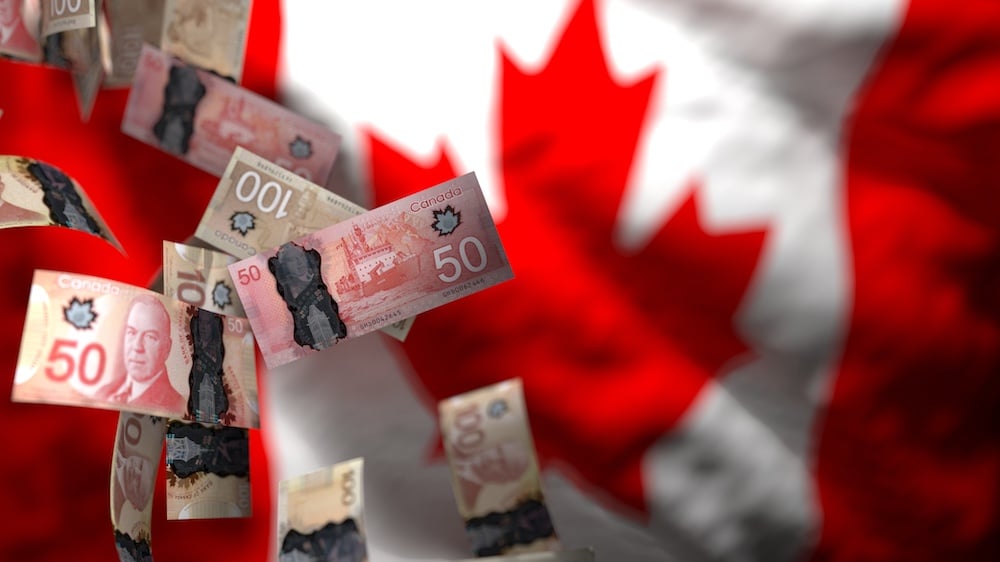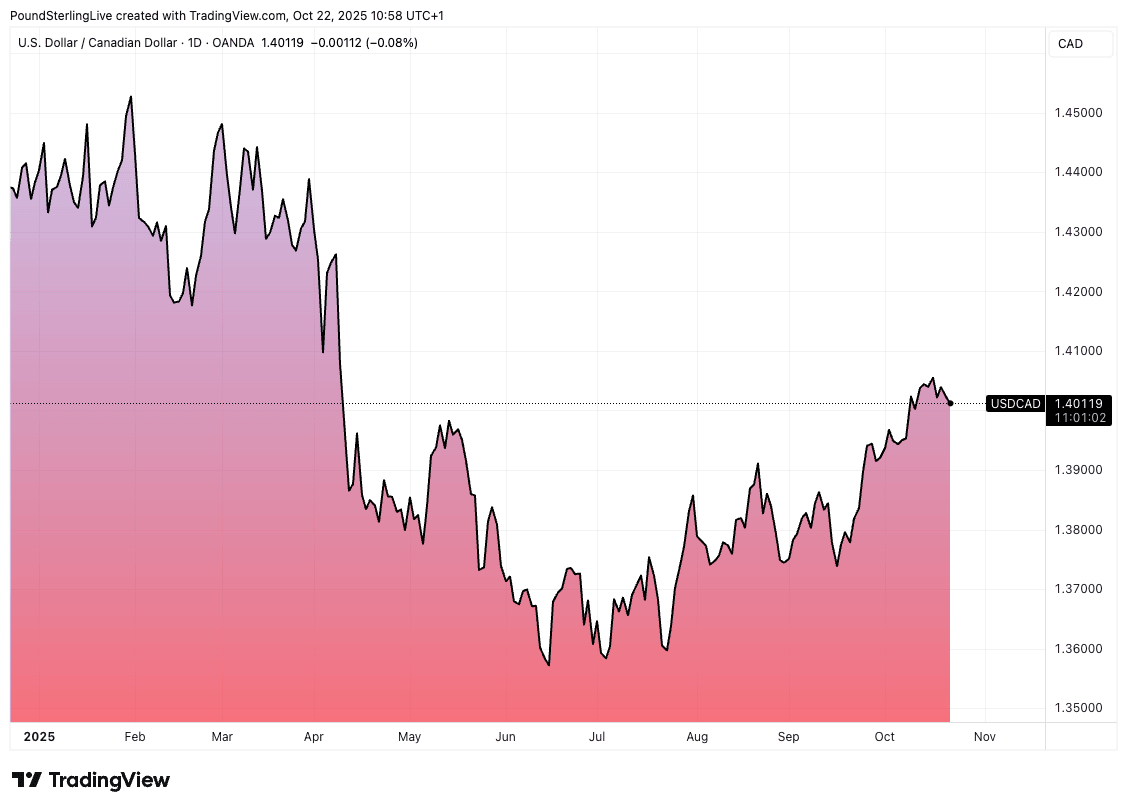
Image © Adobe Images
Bank of America says risk-reward now favours a move higher in the Canadian dollar. despite the prospect of delayed rate cuts in Ottawa.
Analysts say in a new report that the Canadian economy remains soft, but recent resilience in the labour market and persistently firm core inflation are likely to sway the Bank of Canada's next policy move.
"We expect the BoC to hold its policy rate steady at 2.50% on October 29, though the risks are tilted toward a 25bp cut,” says BofA.
Sticky inflation, with both core measures above 3%, leaves policymakers little room to ease this month.
Currency analysts think the decision could bolster the Canadian dollar, as markets may have gone too far in pricing future easing.
They say "the CAD curve prices out cuts – but not enough for the next meeting," suggesting scope for short-end yields to move higher and the loonie to strengthen as expectations recalibrate.
Above: Market expectations for the Bank of Canada interest rate path have fallen notably since July.
While Canada's growth picture is subdued, the report highlights small signs of improvement: July GDP rose 0.2% month-on-month, driven by mining and oil output, with manufacturing up 0.7%.
Even though retail trade contracted and consumer sentiment has softened, survey data show a modest rebound in spending intentions and household financial health in the third quarter.
The September employment report was another positive surprise, with a net gain of 60,400 jobs following a steep August drop.
Job creation was broad-based, led by the private sector and goods-producing industries.
The unemployment rate held at 7.1%, above estimates of the natural level, but the rebound in full-time hiring hints at stabilisation.

Above: USD/CAD in 2025.
Inflation, however, remains the key obstacle to early policy easing:
Headline CPI climbed to 2.4% year-on-year in September from 1.9% in August, driven by smaller declines in fuel prices.
The average of the Bank of Canada’s core measures rose to 3.15% from 3.10%, underscoring what BofA calls "persistent underlying price pressures."
The bank expects inflation to moderate in coming months, creating room for two 25bp cuts: one in December, another in January, that would bring the policy rate to 2.00%.
"Risk/reward favours positioning for lower USD/CAD," says BofA.
With USD/CAD trading above 1.40 and front-end implied volatility near historical lows, the market is not pricing much risk premium for a potential hawkish surprise.
This means a stronger-than-expected hold or more upbeat tone from the Bank of Canada could trigger a notable drop in USD/CAD, particularly if domestic sentiment improves alongside equities.
In BofA's view, the divergence between weaker sentiment data and a rising Toronto Stock Exchange index suggests conditions "are likely less dire than the sentiment data suggest."

